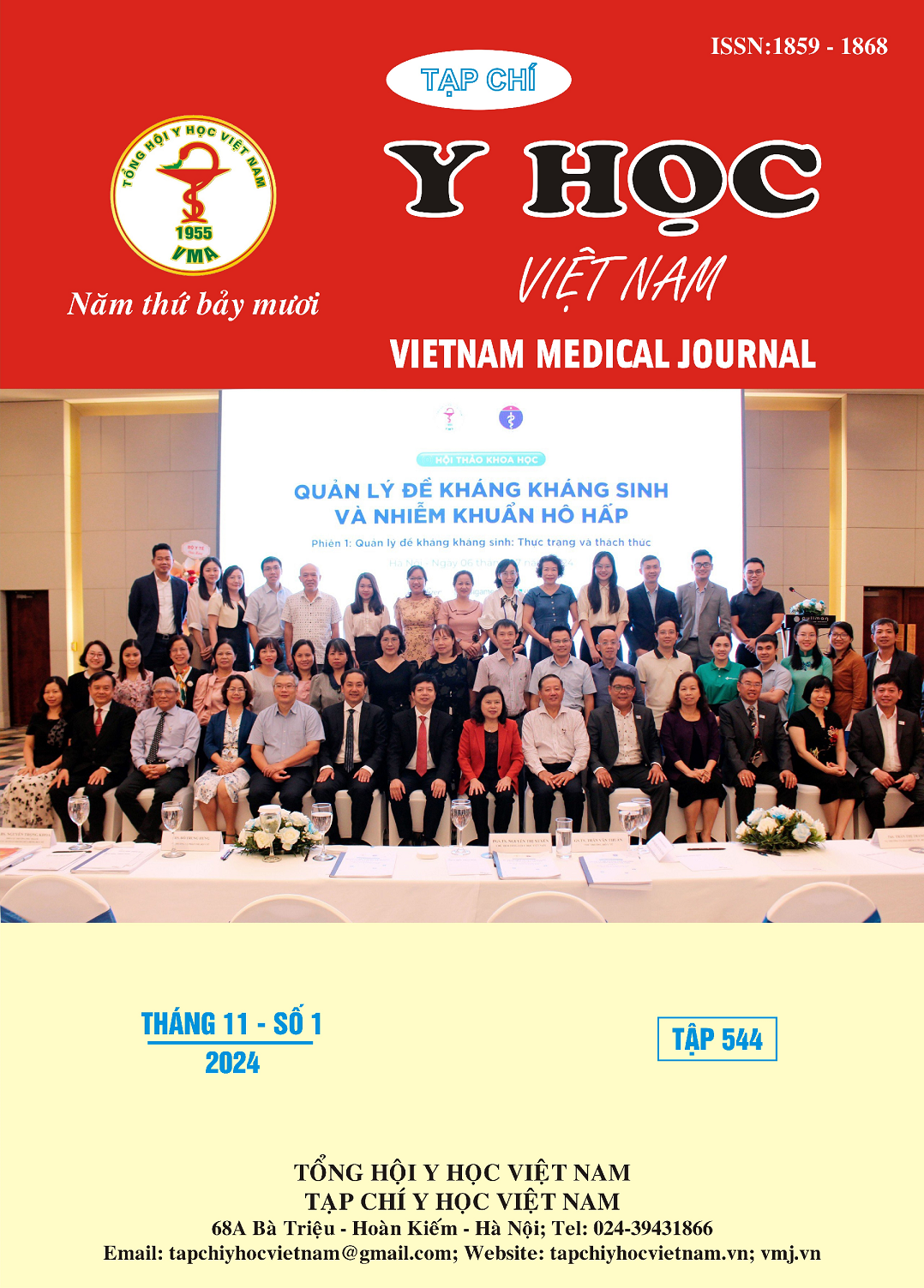RESULTS OF PLASMA EXCHANGE FOR PATIENTS WITH GUILLIAN-BARRÉ SYNDROME AND MYASTHENIA GRAVIS AT HANOI MEDICAL UNIVERSITY HOSPITAL
Main Article Content
Abstract
Objective: The study aimed to describe the clinical characteristics, effectiveness of plasma exchange therapy, and potential complications during treatment in patients with myasthenia gravis and Guillain-Barré syndrome. Methods: This was a retrospective, descriptive study of patient medical records. Results: The study included 45 patients, of which 32 had Guillain-Barré syndrome (71.1%) and 13 had myasthenia gravis (28.9%). The male-to-female ratio was 22/23. A total of 237 plasma exchange sessions were performed: 114 using fresh frozen plasma and 123 using 5% albumin. Muscle strength in the major muscle groups improved after the treatment. There were 26/237 (11%) cases of anaphylaxis, with 23 of these occurring during plasma exchange using fresh frozen plasma, requiring a switch to 5% albumin. Seven cases required termination of the procedure due to anaphylaxis. Other complications observed included pneumonia (17.8%), catheter-related infections (4.2%), significant bleeding (2.1%), and filter clogging (0.8%). In the Guillain-Barré group, 6/32 patients required invasive ventilation; the average number of plasmapheresis sessions was 5.3±0.9; and 87.5% of patients showed significant improvement based on the Hughes scale. In the myasthenia gravis group, 7/13 patients required invasive ventilation; the average number of plasma exchange sessions was 5.3±1.6; and 92% of patients showed significant improvement based on the Myasthenia Gravis Composite (MGC) scale. Conclusion: Plasma exchange improves muscle weakness in patients with myasthenia gravis and Guillain-Barré syndrome. The procedure is generally safe, with anaphylaxis being the most common complication, most of which were mild.
Article Details
Keywords
Plasma exchange, Guillain-Barré syndrome, Myasthenia Gravis
References
2. Brettle RP, Gross M, Legg NJ, Lockwood M, Pallis C. Treatment of Acute Polyneuropathy by Plasma Exchange. The Lancet. 1978;312(8099): 1100. doi:10.1016/S0140-6736(78)91837-8
3. Olarte MR, Schoenfeldt RS, Penn AS, Lovelace RE, Rowland LP. Effect of Plasmapheresis in Myasthenia Gravis 1978-1980. Ann N Y Acad Sci. 1981;377(1):725-728. doi:10.1111/j.1749-6632.1981.tb33770.x
4. Padmanabhan A, Connelly-Smith L, Aqui N, et al. Guidelines on the Use of Therapeutic Apheresis in Clinical Practice – Evidence-Based Approach from the Writing Committee of the American Society for Apheresis: The Eighth Special Issue. J Clin Apheresis. 2019;34(3):171-354. doi:10.1002/jca.21705
5. Nguyễn Công Tấn. (2013). Nghiên cứu hiệu quả của phương pháp thay thế huyết tương trong cấp cứu hội chứng Guillain-Barré. Viện Nghiên cứu Khoa học Dược Lâm Sàng 108.
6. Koningsveld R van, Steyerberg EW, Hughes RA, Swan AV, Doorn PA van, Jacobs BC. A clinical prognostic scoring system for Guillain-Barré syndrome. Lancet Neurol. 2007;6(7):589-594. doi:10.1016/S1474-4422(07)70130-8
7. Burns TM, Conaway M, Sanders DB. The MG Composite: A valid and reliable outcome measure for myasthenia gravis. Neurology. 2010;74(18): 1434. doi:10.1212/WNL.0b013e3181dc1b1e
8. Thông tư 51/2017/TT-BYT Hướng dẫn phòng, chẩn đoán và xử trí phản vệ - Cơ sở dữ liệu quốc gia về VBQPPL - Bộ Y tế. Truy cập ngày 20 tháng 7, 2024. https://vbpl.vn/boyte/Pages/vbpq-van-ban-goc.aspx?ItemID=128248
9. Trần Đình Trung. (2018). Đánh giá hiệu quả phương pháp thay huyết tương bằng dịch thay thế albumin 5% trong điều trị hội chứng Guillain-Barré. Luận văn thạc sĩ y học, Trường Đại học Y Hà Nội.
10. Nguyễn Gia Bình. (2011). Nghiên cứu ứng dụng một số kỹ thuật lọc máu hiện đại trong cấp cứu, điều trị một số bệnh.


